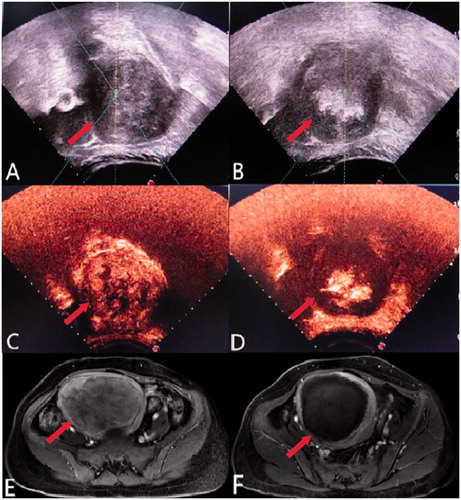Figures & data
Table 1. Contributing factors and group assignments.
Figure 1. A 45-year-old patient with an 8.7 × 8.5 × 8.3 cm uterine fibroid and the significant grey-scale change during HIFU treatment. (A) Before HIFU treatment, ultrasound showed a hypoechoic fibroid (arrow). (B) Immediately after HIFU treatment, ultrasound showed a lumpy grey-scale change in the treatment area (arrow). (C) Before HIFU treatment, contrast-enhanced ultrasound showed the tumour perfusion area (arrow). (D) Immediately after HIFU treatment, contrast-enhanced ultrasound showed no enhancement surrounding the fibroid (arrow), indicating complete ablation. (E) Pre-treatment enhanced T1-weighted MRI showed tumour perfusion (arrow). (F) Post-treatment enhanced T1-weighted MRI showed a small area of enhancement along the tumour edges, with an ablation rate of 94% (arrow).

Table 2. General information for thefour groups (X¯ ± S).
Table 3. Comparison of the treatment outcomes among the four groups.
Table 4. Comparison of the treatment outcomes among the four groups.
Table 5. Comparison of intra-procedure and post-procedure adverse effects.
